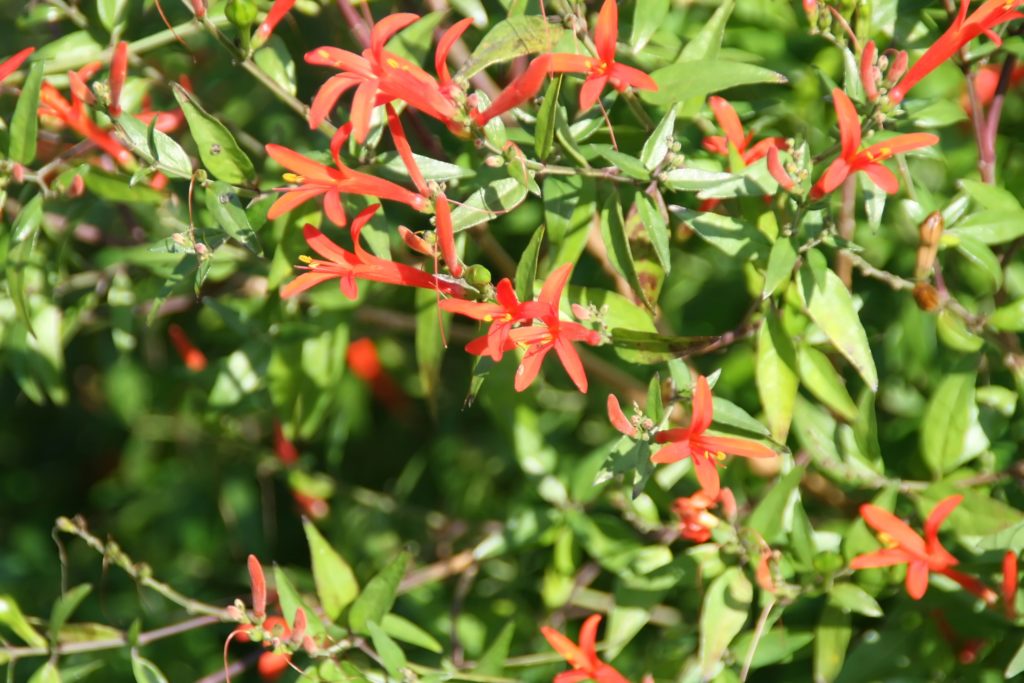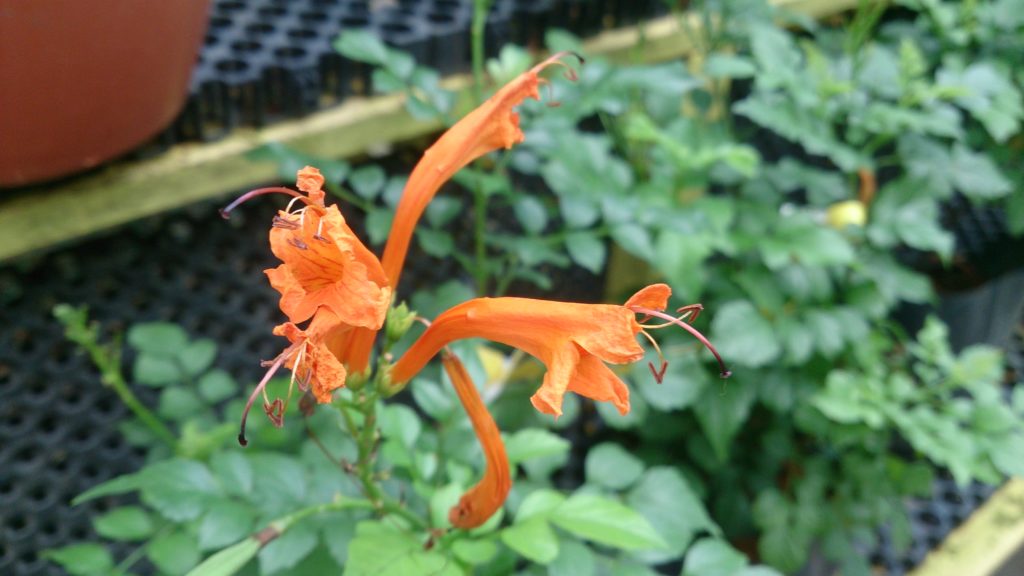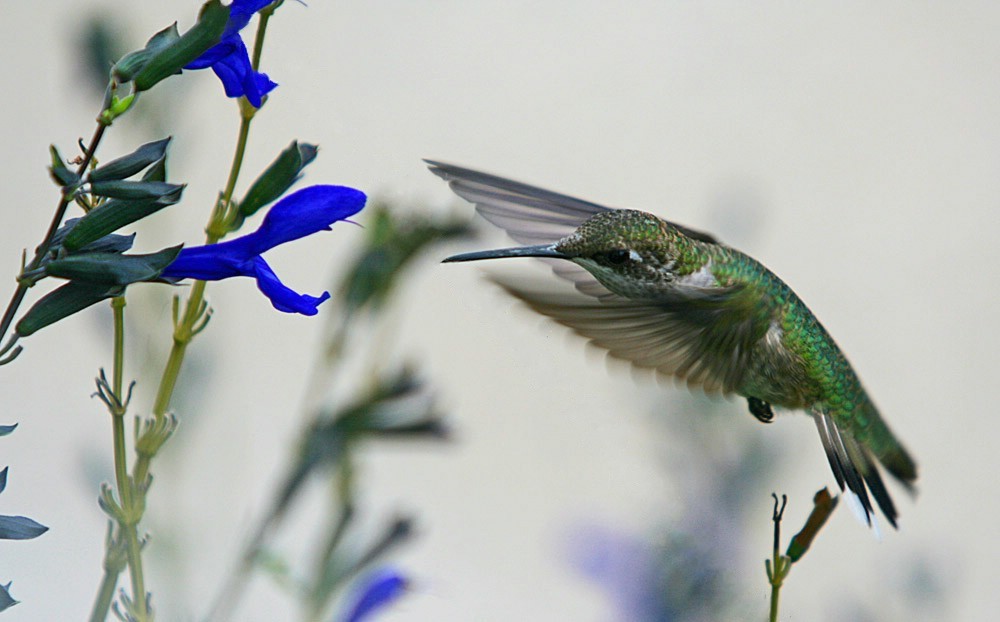We’re starting to see hummingbirds make their way through for the Spring migration! These tiny birds are BIG eaters. They need to feed several times an hour and consume half their body weight in food each day. The February freeze damaged a large amount of the hummingbird’s food source, and the plants that are coming back are coming into bloom later than normal. This makes it hard for birds to find the food they need to continue to migrate.
The good news is…humans can help! While you’re replacing plants and revamping areas this Spring, consider plants that look great and provide lots of nectar for hummingbirds to feed on. Our favs for South Texas are Firecracker Plant (aka Cuphea), Salvias (like Salvia greggii and Salvia leucantha), and Cape Honeysuckle.


You can supplement those hummingbird plants with some feeders. Fill your feeders with 1 part sugar + 4 parts water and be sure to change water every 3-4 days this Spring and every 2-3 days in the Summer.

-Wyatt



Phyllis says
Live in Missouri, when the best time for the feeder
Kathleen Vadney says
I have planted several cultivars of salvia and I planted mist flower. I’ve been visited by a male Ruby throat but my large cape honey suckle plants were frozen all the way to the ground so I don’t have as many hummingbird visitors this spring. I planted as many salvia and verbena as I could get away with. They look beautiful and are really starting to bloom now.
jennifer bailey-deardorff says
i have 3 feeders in my back yard and one out front…mixed my own blend of juice…from morning all the way till almost dark,the hummers feed…its so fascinating to watch cause i have a little tiny orange throated male that dominates all 3 feeders…he is called a ROFUS and is very aggresive…he sits on the branch hiding in the tree and attacks the other hummers that come to feed…its quite entertaining…all my plants out back and out front are hummingbird,butterfly and bumble bee attractors…GOOD LUCK everyone…
Debbie Dumesnil says
I purchased one of your salvia plants with the long, conical deep purple flower clusters. I put it in my veggie garden to attract bees for pollination. (At your recommendation) Well it worked like a charm. Mr. Bumble and family visits every morning. And imagine my surprise when a lovely ruby throat hummingbird graced my garden this morning. So I hung a feeder, now that I know they’re here. It was wonderful watching them chase each other around. Thank you for the recommendation!!
James Gill says
Thanks Debbie, snap a photo of your bees and hummers, and post on our Facebook /www.facebook.com/gillnurserycc
Scott says
Why not the red coloring, I’m a novice and always thought I heard this helps attracts. What gives?
Jesse says
Hi Scott – this article says it well:
“It’s true that no solid research yet exists to prove that red dye is harmful to hummingbirds. Hummingbirds are not humans; are not mice. But all hummingbird feeders have red parts that serve to attract the birds, so the dye is unnecessary at best, and potentially harmful at worst. Artificial nectars have little if any added nutritional value over sugar water. To avoid causing any possible harm, I stick to the home-made formula of one part white table sugar to four parts boiled water, and let the red feeder parts do the work of attracting hummingbirds to my door.”
https://www.birdwatchersdigest.com/bwdsite/learn/hummingbirds/red-dye-hummingbird-nectar.php#:~:text=It's%20true%20that%20no%20solid,dye%20is%20harmful%20to%20hummingbirds.&text=But%20all%20hummingbird%20feeders%20have,nutritional%20value%20over%20sugar%20water.
Emily Allen says
Hummers have been spotted at my house for at least two weeks. Do remember to clean your feeders, too, before filling with fresh food–mold and bacteria accumulates quickly! Definitely do not add red food coloring!!
Deborah Lunceford says
Great article! Gill is doing a great job restocking! We’ve had several hummers this week! I’ve got a feeder out and few plants they will come to. I agree about the red food coloring – just don’t.
Marlyn Garant says
I have had hummingbirds at my feeders for about 2 weeks now. Mix my own nectar (no red coloring). I have them at the front and back of the house. I use the large feeders so that they can perch on the ring and give their wings a rest.
Also, I have woodpeckers who come every day to feed also and they are wonderful to watch also. No, they have not bothered my facia boards at all.
Carolyn Ellison says
Good morning Marlyn, what part of the country do you live in I am in East Central Indiana I’m not sure if it’s too early to hang my hummingbird feeder‘s yet. I have been feeding the hummingbirds for several years now last year I had five and two of them were a different species, thank you
I would also appreciate hearing from anyone that can tell me when to be prepared for my area when the hummingbirds arrive here.
Cathie says
I used to love in Oregon, and kept feeders out year round. Had to take them in at night in the winter, as to not freeze, but had hummers all year round!
Julie Baker says
Our esperanza attracted a lot of hummingbirds before the freeze. I’m sure it won’t be ready to bloom again for several years so we’ve hung our feeder. No sightings yet.
Nelda Cummings says
I bought a butterfly feeder at a garage sale. What do I mix together to fill the feeder? Is it the same mixture as the hummingbirds? What plants attract butterflies.
James Gill says
Weaker solution for butterflies, 7 to 10 parts water to 1 part sugar. We just stocked mistflower, great for butterflies. We have many more butterfly plants, come have a look.
Louise Chambers says
Great suggestions – I’d also add, red food coloring is not advised, and not needed either. (for hummer food mix)